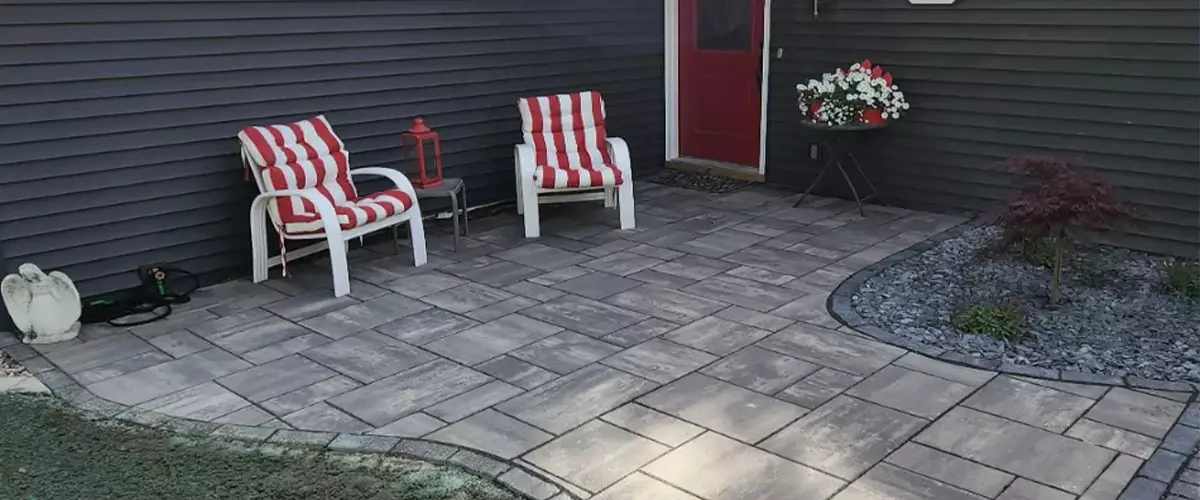
Thinking about using landscape pavers in your next home improvement project? Landscape pavers are a popular choice for creating beautiful and functional outdoor living spaces.
They come in a variety of shapes, sizes, and colors that you can use to create everything from a simple patio to a complex walkway or driveway. The 3 popular types are concrete pavers, brick pavers, and flagstone pavers.
If you’re considering using landscape pavers for your patio project, here are 10 important things you need to know.
What To Know About Landscape Pavers
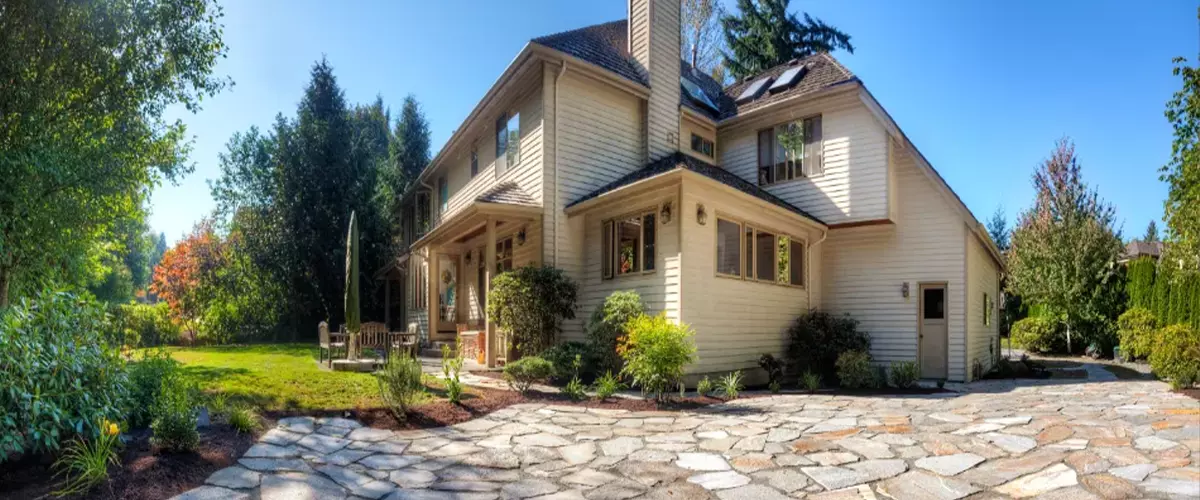
1. Visualize Your Patio Paver Design
There are many landscape pavers to choose from when you are planning your paver patio design. This can make it overwhelming to decide which will work best for your home. That being said, there are a few things to keep in mind as you plan your patio paver design.
- Space: Consider the size of your patio and the overall layout of your yard. You will want to make sure that the pavers you choose will fit well within the space you have available.
- Style: Think about the style of your home and the existing landscape. Pavers come in a variety of textures and shapes, so you’ll want to select something that compliments your home and landscape.
- Practicalities: Don’t forget to factor in practical considerations such as ease of maintenance and slip resistance. With these factors in mind, you’ll be well on your way to choosing the perfect pavers for your patio!
Commercial landscaping costs can range from $5,000 to $75,000 and higher. Much of it depends on which side of basic to high-end your project falls on. Commercial landscaping prices also change due to the total square footage of your landscape, any upgrades, your planting choices, and your overall design.
2. Use Colors That Work For Your Design
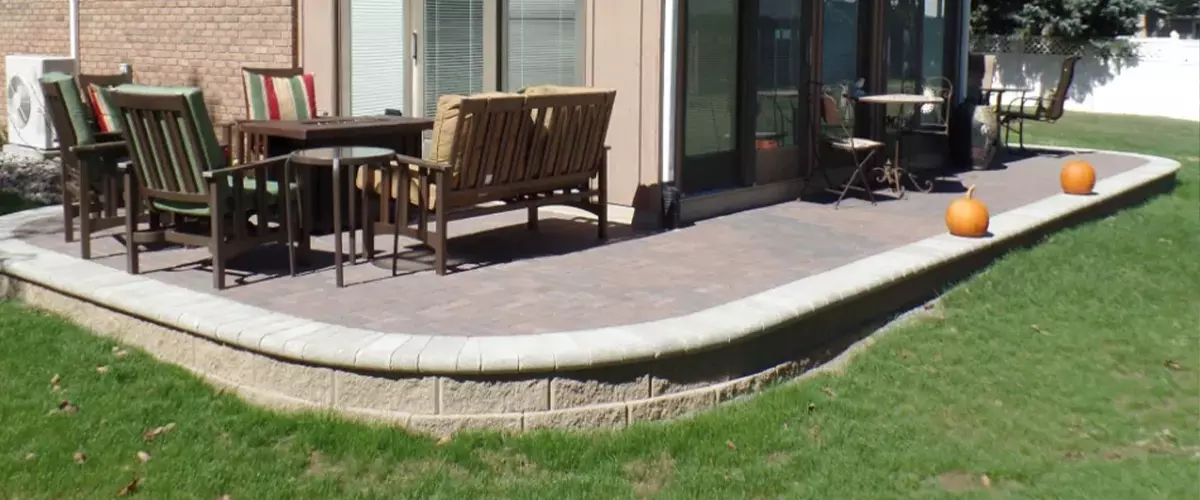
The landscape pavers you select will play a significant role in the overall design of your patio or walkway. In addition to choosing the right shape, size, and texture, it’s also important to consider the colors that will work best for your space.
- Classic Look: If you’re aiming for a classic look, opt for pavers in shades of gray or beige.
- Contemporary Look: For a more contemporary feel, try using pavers in brighter colors like red or yellow.
- Dramatic Look: You can also create a dramatic effect by using contrasting colors, such as black and white.
- Rustic Look: If you want a rustic look, you can choose pavers made from natural stone.
No matter what look you’re going for, there are landscape pavers available in colors that will work for your patio paver design. So don’t be afraid to experiment with different colors and styles until you find the perfect match for your home.
Commercial landscaping costs can range from $5,000 to $75,000 and higher. Much of it depends on which side of basic to high-end your project falls on. Commercial landscaping prices also change due to the total square footage of your landscape, any upgrades, your planting choices, and your overall design.
3. Have A Drainage Plan
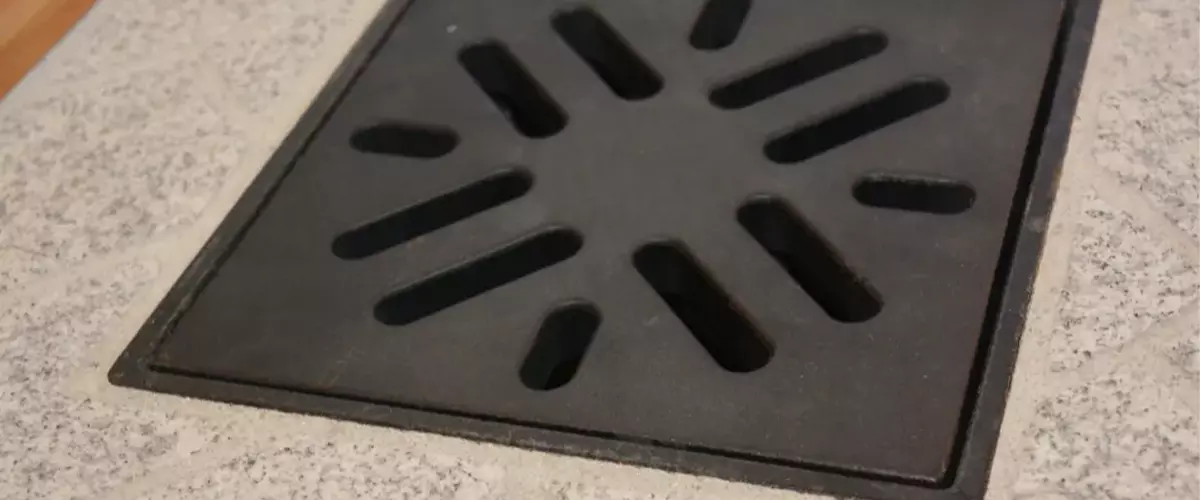
Any landscape paver design worth its salt will take drainage into account, whether your project is a new installation or a retrofit. So make sure you have a drainage plan!
There are multiple ways to handle drainage for your landscape pavers. Below are some of the most common drainage strategies.
Slope Away From Your Home
Drainage Channels
Specialized Pavers
There are also specialized pavers on the market that can help you achieve proper drainage. One of the most popular options is called permeable pavers. These types of pavers have small gaps between them that allow water to seep through, helping to prevent pooling and runoff.
No matter which drainage plan you adopt, it’s critical to ensure that your patio or walkway can withstand heavy rains without causing water damage to your home. Whichever route you choose, be sure to consult with a landscape professional to ensure that your drainage plan is up to code and effective.
4. Dig Deep And Wide

Excavation Dimensions
The depth of the hole should be at least twice the thickness of the pavers. The width should be at least three times the size of the pavers.
This will ensure that the pavers are properly supported and won’t settle over time. It’s also important to use a level when installing landscape pavers to make sure they’re even. Uneven pavers can lead to trip hazards and can be unsightly.
With a little bit of care and attention to detail, you can create a beautiful patio that will last for years to come.
5. Use A Weed Barrier
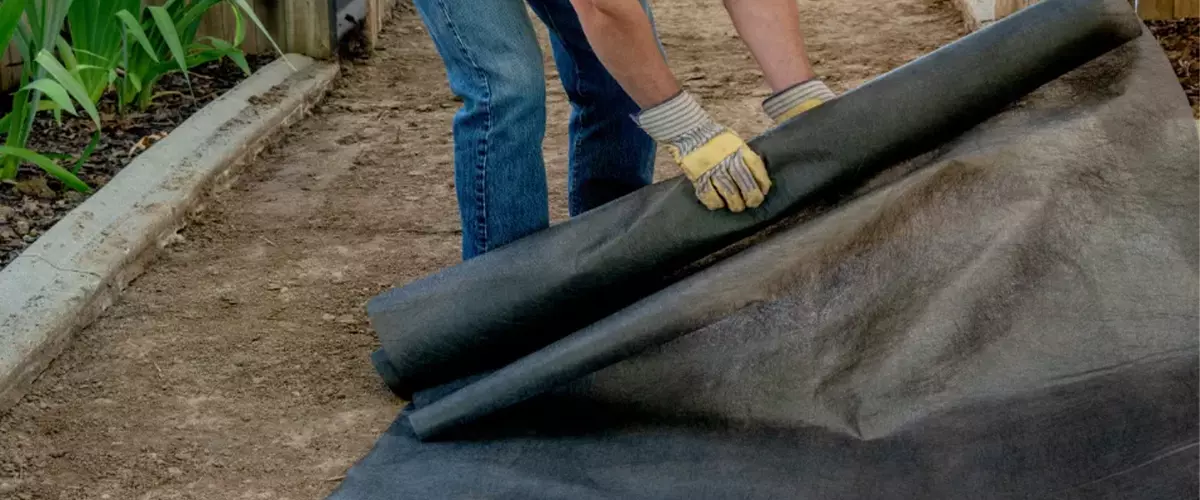
While landscape pavers are relatively easy to install, there is one important step that should not be overlooked: installing a weed barrier. There are several benefits to using a weed barrier beneath your landscape pavers.
Blocks Weeds
A weed barrier helps to prevent weeds from coming up through the cracks between the pavers. Without a barrier, weeds will quickly grow in between the cracks of the pavers and make your patio look unsightly. A weed barrier prevents this by creating a barrier between the soil and the pavers.
Discourages Insects
Prevents Damage
6. Create A Solid Base
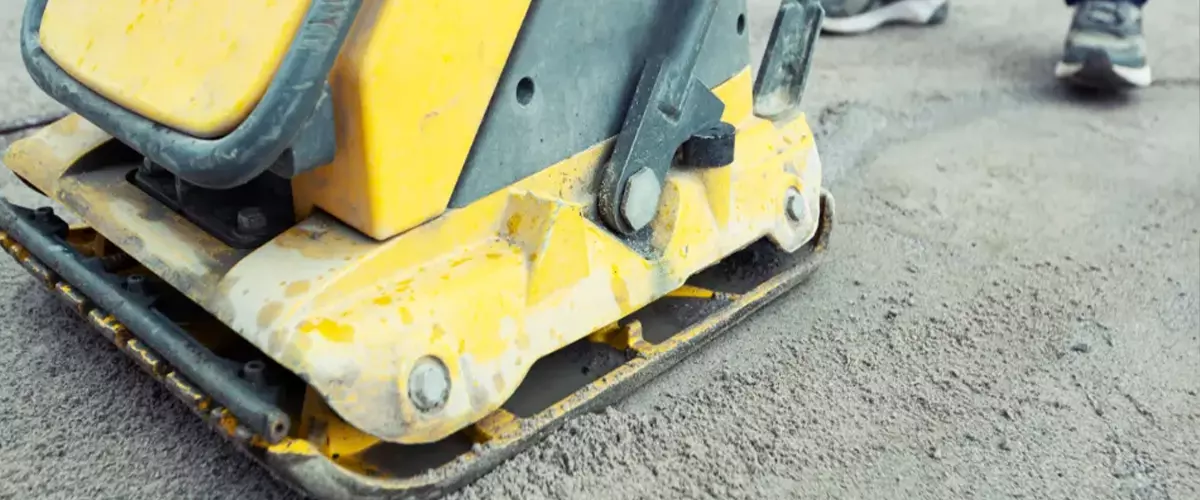
One of the most important steps in the installation process is creating a solid base. The base provides support for the pavers and helps to prevent settling and shifting. Without a solid base, landscape pavers can become loose and uneven, creating an eyesore and potential trip hazard.
Compact The Soil
Gravel And Sand
7. Make An Edge
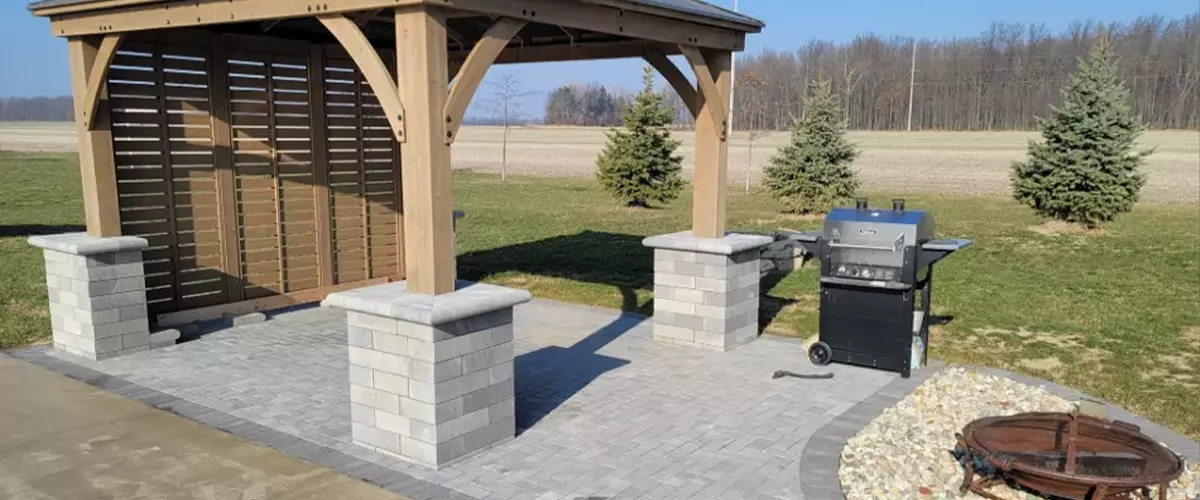
If you’re planning to install landscape pavers for a patio, it’s important to make sure that you create a defined edge. An edge will help to contain the pavers and prevent them from shifting or spreading over time. Without an edge, landscape pavers can quickly become uneven and unstable.
There are a few different ways that you can create an edge for your landscape pavers.
Metal Or Plastic Edging
One option is to use metal or plastic edging. This type of edging is easy to install and provides a clean, straight edge.
Bricks Or Stones
Another option is to use bricks or stones to create an informal, natural-looking edge.
Whichever option you go with, it is essential to make sure that you create a strong edge when installing landscape pavers. This will ensure that your patio looks great and lasts for many years to come.
8. Cut Patio Pavers To Fit And Place Them Down
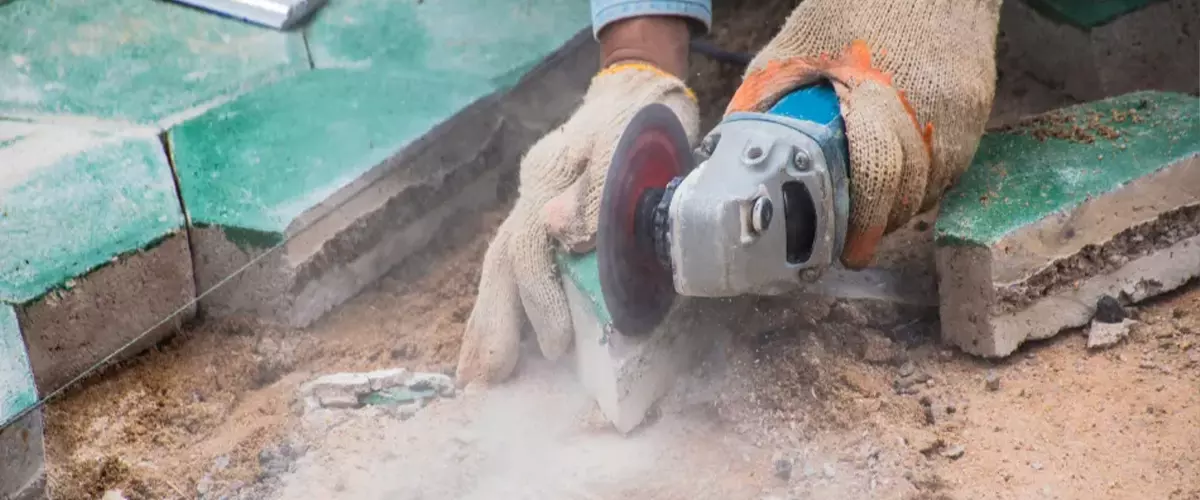
Any home improvement project requires a bit of elbow grease, especially when it comes to installing landscape pavers. While it may be tempting to simply lay the pavers in place without any cuts, this would be a mistake.
There are several reasons why cutting your pavers to fit is a good idea:
Custom Look: Cutting pavers to fit creates a more custom look. With landscape pavers, you have the opportunity to create a truly unique outdoor space. By cutting the pavers to fit your specific area, you can achieve a one-of-a-kind look that will be the envy of your neighborhood.
Prevent Shifting: Cutting pavers to fit helps prevent shifting and settling. Over time, landscape pavers can shift and settle if they are not properly fitted. This can lead to cracks and uneven areas in your patio or walkway. By cutting pavers to fit, you can help prevent these issues and keep your landscape looking its best.
Ensure A Tight Fit: Cutting pavers to fit ensures a tight, secure fit. When landscape pavers are not cut to size, there can be gaps and spaces between the pavers. This can allow dirt and debris to accumulate, which can eventually lead to weeds and grass growing between the pavers. Cutting pavers to fit provides a better fit that helps keep your landscape looking neat and tidy.
Easy To Do: Cutting pavers to fit is easy! With the right tools and supplies, cutting landscape pavers is a quick and easy process. There’s no need to hire a professional because you can do it yourself in just a few simple steps:
- Mark the cutting line on the paver. You can use a marker or chalk to draw a line on the top of the paver where you need to make the cut
- Set the paver on a solid surface like a concrete slab or driveway. Place one end of a 2×4 or 2×6 board on the cutting line and use it as a guide while you score the paver with a masonry chisel. Performing several passes with the chisel will ensure an accurate cut
- Once you’ve scored the entire line, it’s time to snap the paver in two. Place the chisel at the end of the score line and tap it with a hammer until the paver breaks along the line. If necessary, use a masonry saw or angle grinder fitted with a diamond blade to clean up any rough edges along the cutline
9. Fill In The Cracks
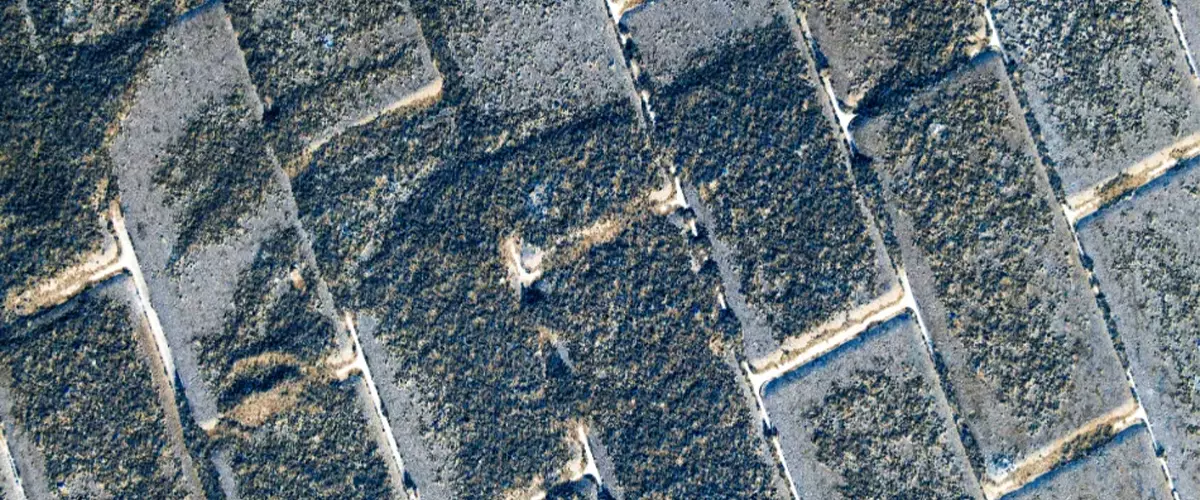
Secure your pavers in place by packing the cracks between each paver with sand. Use a broom to spread the sand around over the pavers until the sand works its way into all the crevices.
Be sure to use construction sand (also known as polymeric sand) for the best results.
10. Keep Extra Landscape Pavers For Repairs
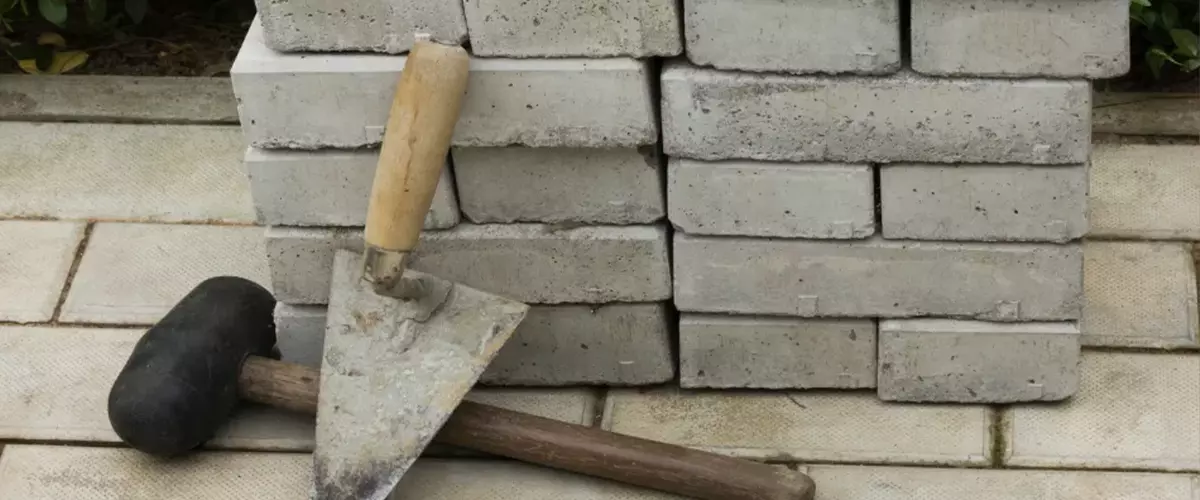
Although landscape pavers are incredibly durable, they aren’t indestructible. That’s why it’s always a good idea to have some extra pavers on hand, just in case you need to replace one or two. This way, you can avoid having to run to the store and find matching pavers if you ever need to do a repair.
So if you’re planning on installing concrete pavers, brick pavers, or flagstone pavers, be sure to buy more than you think you need. It will save you time and hassle in the long run!
Farrell’s Lawn & Garden Can Help With Your Landscape Paver Project
There are many things to consider before you start your landscape paver project, but with careful planning and execution, the results can be stunning.
Although it may seem daunting at first, even cutting pavers to fit can be accomplished with a few basic tools. Most importantly, have fun with it! After all, this is your chance to add personality and style to your outdoor living space.
If you need more help or inspiration during any stage of the process, please don’t hesitate to reach out and fill out our contact form today—we’re always happy to chat about your next project!
